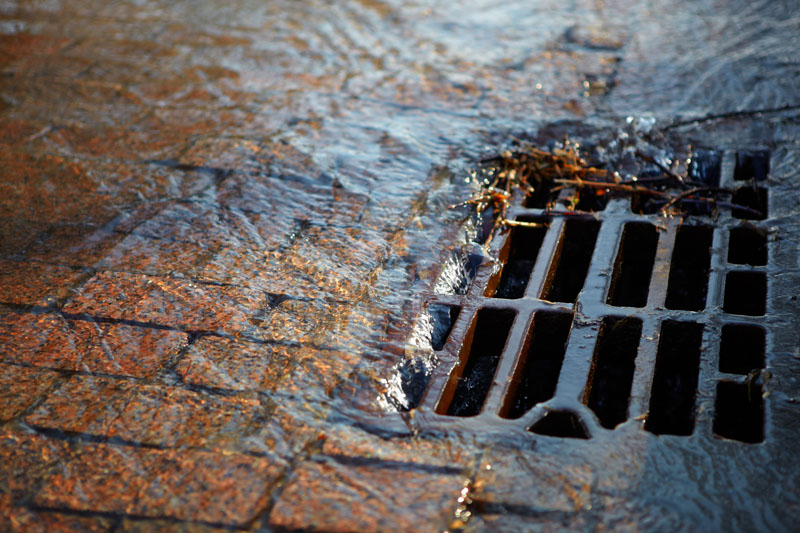
Stormwater is the polluted runoff gathered from rain, severe thunderstorms, and even snow from roads, parking lots, and other impervious surfaces, where runoff collects pollutants and carries them downstream, ultimately into the Chesapeake Bay.
Early Americans recognized the need to manage the built environment to protect water resources and the health of the community. Over time, urban stream management evolved. In the 1800s cities began to build enormous sewage systems to convey wastewater downstream - often contaminating the water of downstream communities. In the beginning, engineers designed systems which conveyed sewage and stormwater in the same pipes. Later, cities began replacing combined sewers with separate sewer systems. Although sewage overflow remains an issue for older systems, today stormwater runoff from urban development and impervious surfaces such as parking lots, roofs, and roads is the fastest growing source of water pollution and why many of Virginia’s waterways are impaired.
Urban development increases the amount of stormwater runoff entering local streams and waterways. Gray infrastructure, designed to reduce flooding by draining water quickly, results in increased stream flashiness and erosion.Stormwater is the polluted runoff gathered from rain, severe thunderstorms, and even snow from roads, parking lots, and other impervious surfaces, where runoff collects pollutants and carries them downstream, ultimately into the Chesapeake Bay.
Rampant growth and development in watersheds that supply Virginia’s drinking water has led to increased sedimentation and bacteria from stormwater runoff above water intakes and around wellheads. The resulting downstream impacts include financial costs for treatment plus costs to human health from chemical treatment of raw water, disinfectant byproducts from chlorine, or lead leaching from pipes.
Much of our urban and suburban infrastructure was built before we fully understood how our land use stormwater management increased stream erosion and degradation. Sustainable land use,transit, and water and land conservation programs reduce polluted runoff by reducing sprawl development and preserving open space, farmland, forests and historic resources.
Now, localities are reducing the polluted runoff they contribute to Virginia’s waterway by retrofitting older infrastructure, building transit-oriented and low-impact development, and growing green infrastructure. In addition to promoting resilient communities and smarter growth, Virginia has encouraged long-lasting restoration efforts and sustainable stormwater management practices through the Stormwater Local Assistance Fund (SLAF) and the Virginia Conservation Assistance Program (VCAP). Every Clean Water and our allies work with legislators to ensure strong and equitable funding for these critical programs.
Stormwater Water Local Assistance Fund (SLAF)
The Stormwater Local Assistance Fund (SLAF) is a state and local matching grant program that helps address pollution from existing sites through capital projects including capital projects
New and retrofit stormwater best management practices (BMPs), stream restoration, low impact development, buffer restoration, and pond and wetland restoration. Learn more.
Virginia Conservation Assistance Program (VCAP)
The Virginia Conservation Assistance Program (VCAP) provides cost-share assistance for smaller-scale residential and commercial projects to improve drainage and reduce erosion such as rain gardens, conservation landscaping, and permeable driveways. These practices can be installed in areas of your yard where problems like erosion, poor drainage, or poor vegetation occur. Learn more.